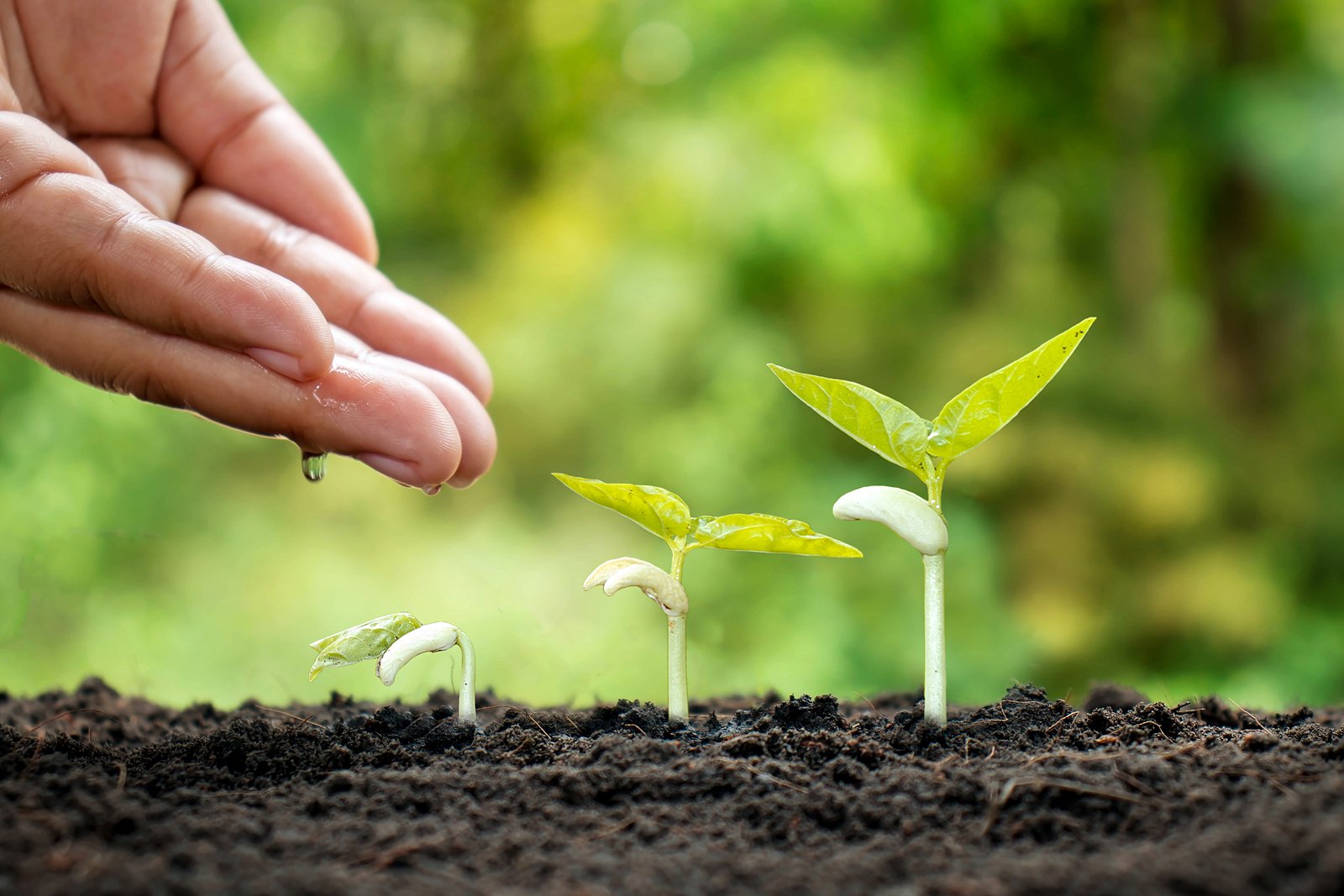Many of us are feeling stressed at present – and often for good reason. But experiencing stress can be exhausting and we often feel that as a result of the physical, psychological and behavioural symptoms of stress, we feel as though we are out of control.
Grounding exercises are things you can do to bring yourself into contact with the present moment – the here and now, rather than focusing on all the things that are ‘stressing you out”. They can be quick strategies (like taking three deep “belly breaths”) or longer, more formal exercises (like meditation). Different strategies work for different people, and there is no “wrong” way to ground yourself. The main aim is to keep your mind and body connected and working together.
People who have experienced trauma can sometimes be confronted by flashbacks or intense memories of what has happened. A flashback is an example of being in the “there and then” rather than the “here and now,” so grounding exercises can help to bring you back.
Grounding Exercises are a way to firmly ground yourself in the present and ground yourself in the here and now.
Grounding exercises are helpful for many situations where you find yourself becoming overwhelmed or distracted by stress, distressing memories, thoughts or feelings. If you find yourself getting caught up in strong emotions like anxiety or anger, or if you catch yourself engaging in stressful circling thoughts, or if you experience a strong painful memory or a flashback, or if you wake up from a nightmare with a pounding heart, grounding exercises can help bring you back down to earth.
It can be helpful to have a selection of grounding exercises that you can draw upon at different times. Just like no one technique works for all people, we often find that not all techniques work at all times. One thing you can do is look over some lists of grounding exercises and write down all the ones you think might work for you. Carry your personal list with you. Then, when you find yourself needing relief, you can run your eyes down your list and pick out the strategy that will be most helpful in that situation.
The following grounding exercises are about using our senses – sight, hearing, smell, taste, touch – to reconnect our mind and body in the present. It is our basic human senses that remind us we are here now, and we are safe.
In working through the grounding exercises, you might find one or two that work for you. Keep in mind to only to use the exercises that you feel comfortable with.
Consider the following options:
· Remind yourself of who you are now. Say your name. Say your age now. Say where you are now. Say what you have done today. Say what you will do next.
· “My name is ________, and I am 54 years old. I am in my living room, in my home, in Richmond, in Adelaide, in South Australia. I woke up early today. I had a shower and fed my dog. I just finished my coffee and toast. Soon I am going to walk to the bus stop and go in to work. I am going to walk down ______ street and then turn left at the bike shop. Then I am going to….”
· Take ten slow breaths. Focus your attention fully on each breath, on the way in and on the way out. Say the number of the breath to yourself as you exhale.
· Splash some water on your face. Notice how it feels. Notice how the towel feels as you dry. Use words in your mind to describe the sensations.
· Sip a cool drink of water.
· Hold a cold can or bottle of soft drink in your hands. Feel the coldness, and the wetness on the outside. Note the bubbles and taste as you drink.
· If you wake during the night, remind yourself who you are, and where you are. Tell yourself who you are and where you are. What year is it, what age are you now? Look around the room and notice familiar objects and name them. Feel the bed you are lying on, the warmth or coolness of the air, and notice any sounds you hear.
· Turn your attention to the clothes on your body, whether your arms and legs are covered or not, and the sensation of your clothes as you move in them. Notice how your feet feel to be encased in shoes or socks, or resting on the floor.
· If you are with other people, and you feel comfortable with them, concentrate closely on what they are saying and doing, and remind yourself why you are with them.
· If you are sitting, feel the chair under you and the weight of your body and legs pressing down onto it. Notice the pressure of the chair, or floor, or table against your body and limbs.
· If you are lying down, feel the contact between your head, your body and your legs, as they touch the surface you are lying on. Starting from your head, notice how each part of your body feels, all the way down to your feet, on the soft or hard surface.
· Stop and listen. Notice and name what sounds you can hear nearby. Start with the closest or loudest sounds. Gradually move your awareness of sounds outward, so you are focusing on what you can hear in the distance.
· Hold a mug of tea in both hands and feel its warmth. Inhale its scent. Don’t rush drinking it; take small sips, and take your time tasting each mouthful.
· Look around you, notice what is front of you and to each side. Name and notice the qualities of large objects and then smaller ones.
· Pick one interesting object in your field of vision. Trace its outline with your eyes, as if you were drawing its lines.
· Get up and walk around. Take your time to notice each step as you take one, then another.
· Stamp your feet, and notice the sensation and sound as you connect with the ground.
· Clap and rub your hands together. Hear the noise and feel the sensation in your hands and arms.
· Wear an elastic band on your wrist (not tight) and flick it gently, so that you feel it spring back on your wrist.
· If you can, step outside, notice the temperature of the air and how it is different or similar to where you have just come from.
· Stretch – notice every muscle and the sensation as you do so.
· Notice five things you can see, five things you can hear, and five things you can feel, taste, or smell.
· If you have a pet, spend some time with them. Notice what is special and different about them.
· Run your hands over something with an interesting texture. Describe it in your mind, as if you have never felt anything like it before.
· Get a sultana, a nut, or some seeds. Focus on how it looks, feels and smells. Put it in your mouth and roll it around, noticing how it feels. Chew it slowly and mindfully, before noticing how it feels to swallow.
· Put on a piece of instrumental music. Give it all of your attention.
· Another option with music is to sit with a piece of paper and a pen. Start drawing a line as the music plays, representing it in the abstract on the page. Follow the music with the pen.
· If you have a garden or some plants, tend to them for a bit. Plants, and actual soil, can be an excellent “grounder!”
You may have other grounding exercises that work for you.
Write down your personal list and keep it with you.
Want to know more strategies for stress management, mindfulness, relaxation and grounding? Send me an email at michelle@bakjacconsulting.com to enquire about coaching and training to build your strategies.
Michelle Bakjac is an experienced Psychologist, Organisational Consultant, Coach, Speaker and Facilitator. As Director of Bakjac Consulting, she is a credentialed Coach with the International Coach Federation (ICF) and a member of Mental Toughness Partners and an MTQ48 accredited Mental Toughness practitioner. Michelle assists individuals and organisations to develop their Mental Toughness to improve performance, leadership, behaviour and wellbeing. You can find her at www.bakjacconsulting.com or michelle@bakjacconsulting.com































